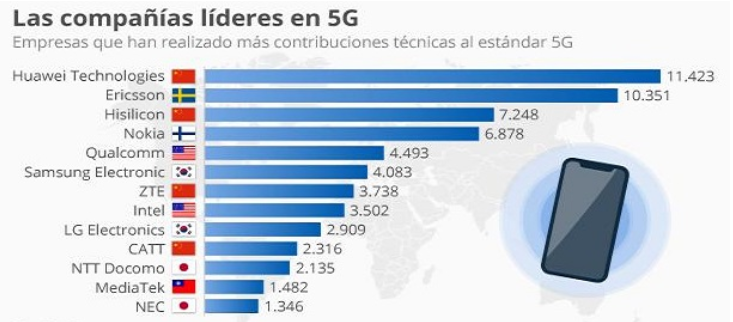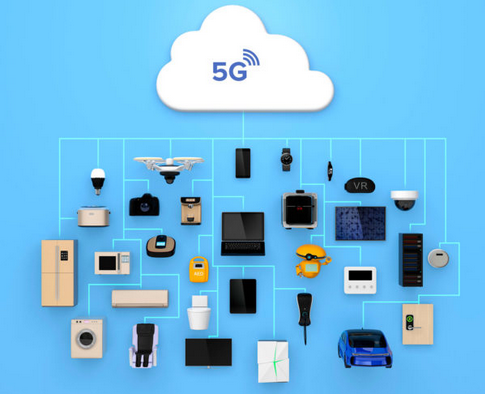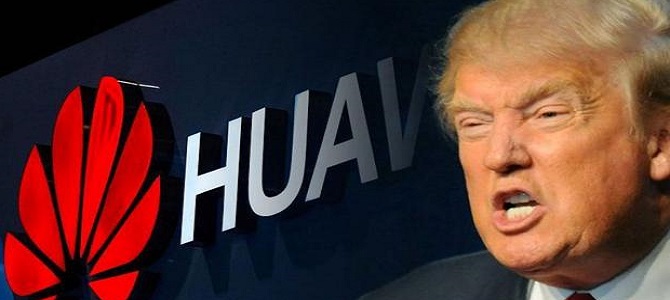The end of Game of Thrones has left many of us an existential vacuum and an unprecedented duel. Precisely when we entered the acceptance phase, a new series of creators of “The Wall”, “Tension with North Korea” and “The crisis of Venezuela” comes to our screens: ‘Game of Trump’.
The recent veto of the Trump administration, the immediate suspension imposed on the Huawei company and the reactions of the companies Google (USA), ARM (UK), Vodafone (UK) Panasonic (Japan) and Toshiba (Japan), generate many doubts about what is happening in the world of technology due to the geopolitical dimension that this field is acquiring. And now, we ask ourselves: how can it affect us in the short and medium term as Spanish citizens and members of the European Union?
In this sense, from the CARTIF Health and Welfare Area we try to reflect and assess the scope of this new edition of the Game of Trump series and analyse the implications that these technologies can have on the socio – sanitary services and the effects of this new war on our quality of life.
Season I: Huawei and Google mobile phones
When we think about improving the quality of life of people with some new technological development, we always keep in mind that people seek to receive services on site, without the need to go physically to a specific place. That is why we believe that it is indisputable that the present and the future of the technological services that we receive go through mobility. In this respect, Huawei is one of the most important actors, being the second manufacturer of phones in the world in terms of sales and popularity among a public that praises especially the duration of their batteries and the quality of their cameras.
The owners of the company’s mobile phones, which number in the millions, are bewildered by the news that Google has broken relations with Huawei, ceasing to provide its software to the Chinese company, which uses Google’s Android operating system. As a result, Google’s decision deprives Huawei of the user interface and widely used applications such as Google Play, Google Maps and Google Mail.
Season II: The supremacy for the domain of 5G
At this point, analysts indicate that the mobile battle, although it is very important from the economic and commercial points of view, is not the most significant point of the confrontation. What is at stake is the supremacy in 5G technology and in this respect Europe has something to say. Since, although the leader in 5G is Huawei, there are two companies belonging to member countries of the European community which are in second and fourth place for their contributions to 5G technology, Ericcson and Nokia, while the first company in the US is in fifth place. This seems to be the reason for the apparent tantrum that everyone thinks will end up resolving with a negotiation, because the future is unstoppable. The Trump administration seems to prefer to slow the deployment of 5G to be dependent on Chinese and European technologies. Meanwhile, those who believe in conspiracies think that they are only pressing to access the keys and thus be able to spy on us.

It is estimated that Huawei will possess in the future up to 30-35% of the global standards of 5G and behind these standards we find the international specifications designed to boost the interoperability of the technology. But what is this about 5G and interoperability? And, above all, what applications can this have in the health field? ‘What are you gay? What are you running?’
Season III: What is 5G and how does it affect us?
The future of the social-health field is “promised” to us in pink thanks to the relationship between 5G and interoperability. For this reason, we have to talk about several lines of technological development in which we are working in CARTIF. An example is the ‘internet of things’ (IoT), which is nothing more than a network of physical objects, machines, people and other devices that allow connectivity and communications to exchange data for smart applications and services. These devices are made up of smartphones, tablets, consumer electronics, vehicles, social robots, companion robots and sensors that allow them to be controlled remotely through the existing network infrastructure, creating opportunities for direct integration between the physical and digital worlds, which improves efficiency, accuracy and economic benefits.
5G technology is the one designed to optimize and improve internet connection speeds, considerably reducing the response time of the network and, therefore, capable of generating a range of opportunities in all digital sectors.
Technologies such as mobile, Wi-Fi and Bluetooth will enable IoT communications through use cases and the 5G is the network that will connect these things. The IoT devices will have different capacities and data demands and 5G network will be necessary to be able to support all of them. With the ‘internet of things’, we will see services that only need a small amount of data and a long battery life, as well as devices that require high speeds and reliable connectivity. (1) (2)
Similarly, from our scientific skepticism regarding technology, it is necessary to note that, as is common in our lives, not everything is in pink and we are aware that there are going to be aspects to take into account to develop a technology humanized designed only to significantly improve the quality of life of people. For example, the increase in speed and volume of information imply higher powers at higher frequencies, and the consequences of the bio-compatibility of these new electromagnetic emissions is a field of study really important. On the other hand, there is the aspect, not less important, of the privacy of the data. Currently, thanks to Big Data and AI there are many companies that have more information about the determinants of our health than the socio-health systems to which we attend (and we all know that the scope of the data ‘is dark and full of terrors’). Some think that this is the true Iron Throne, and there are interests so that, as some cluster us as potential consumers. They want to cluster us to manipulate us.
Final season IV: Making virtue of necessity
The socio-health system is in a critical state from the point of view of sustainability, given the aging of the population and the cuts in budgets. To make the system sustainable as a whole, it is necessary to optimize the connection between necessary resources and available services. We really believe that this can only be solved by an adequate, intelligent and person-centered use of technology.
At the international level, the aging of the population is affecting all the regions and countries of the world that have reached a certain level of development. There is no doubt that the extension of life is one of the main achievements of our society, although it is true that this achievement also poses important challenges and opportunities for our economy, health system and social protection.

In Spain, demographic aging is very marked and this is especially evident in the larger regions, characterized by a rural population whose young people tend to migrate to cities. In these areas, providing social and health services is more expensive and difficult due to the lack of resources. The social commitment has allowed to transform this unfavorable situation into a virtue. Therefore, the social-health system of Spain is considered as one of the best in the world, due to the good results it presents, combining high levels of efficiency and quality with a comparatively lower cost.
In this respect, Castilla y León, according to the State Observatory for Dependency carried out by the National Association of Directors and Managers of Social Services corresponding to the management of the year 2018, is recognized again (twelfth consecutive year) as the autonomous community that manage better the Dependency in Spain. The corresponding mark of Castilla y León is 9.3 out of 10. The average score of the Spanish communities stands at 5.04 points. Therefore, we are talking about an unprecedented success.
The ecosystem of our region, embodied in the SIVI and BIOTECYL Clusters, formed by a large number of organizations, both public and private: health systems, public social agencies, patient associations, groups that provide services, service companies, geriatric, Universities and Technology Centers, structures the development and provide the services so that we can develop our lives and those of our loved ones in a comfortable way taking into account parameters of quality, efficiency and independence.
For all this, we have to be aware of our responsibility and, from this privileged vision, take advantage of new opportunities to carry out scientific research and humanized technological development with the sole aim of improving the quality of life of people. In CARTIF we believe that this is the meeting point and there we will be contributing our experience.
Alejandro Cuadrado & Pablo Viñas
- Extending the years of life in a natural way - 12 November 2021
- The new paradigm we are waiting - 30 December 2020
- The passage of time - 20 April 2020
